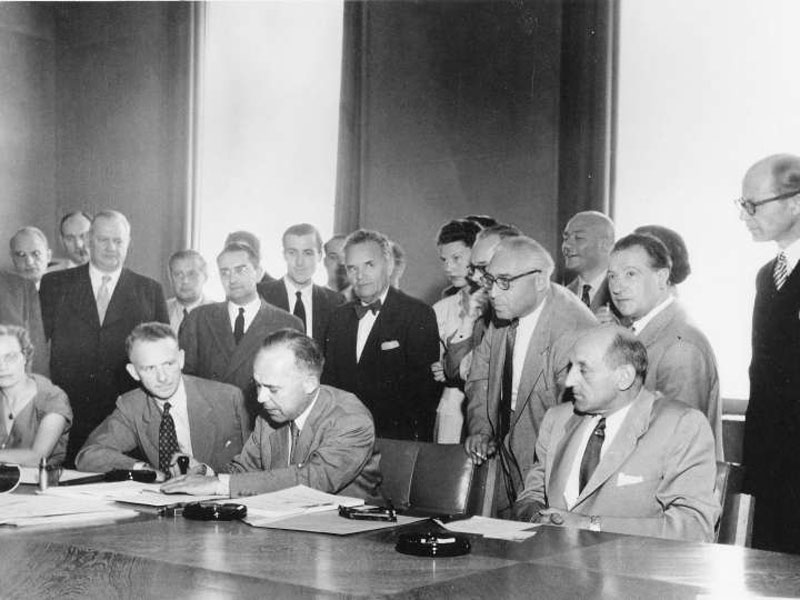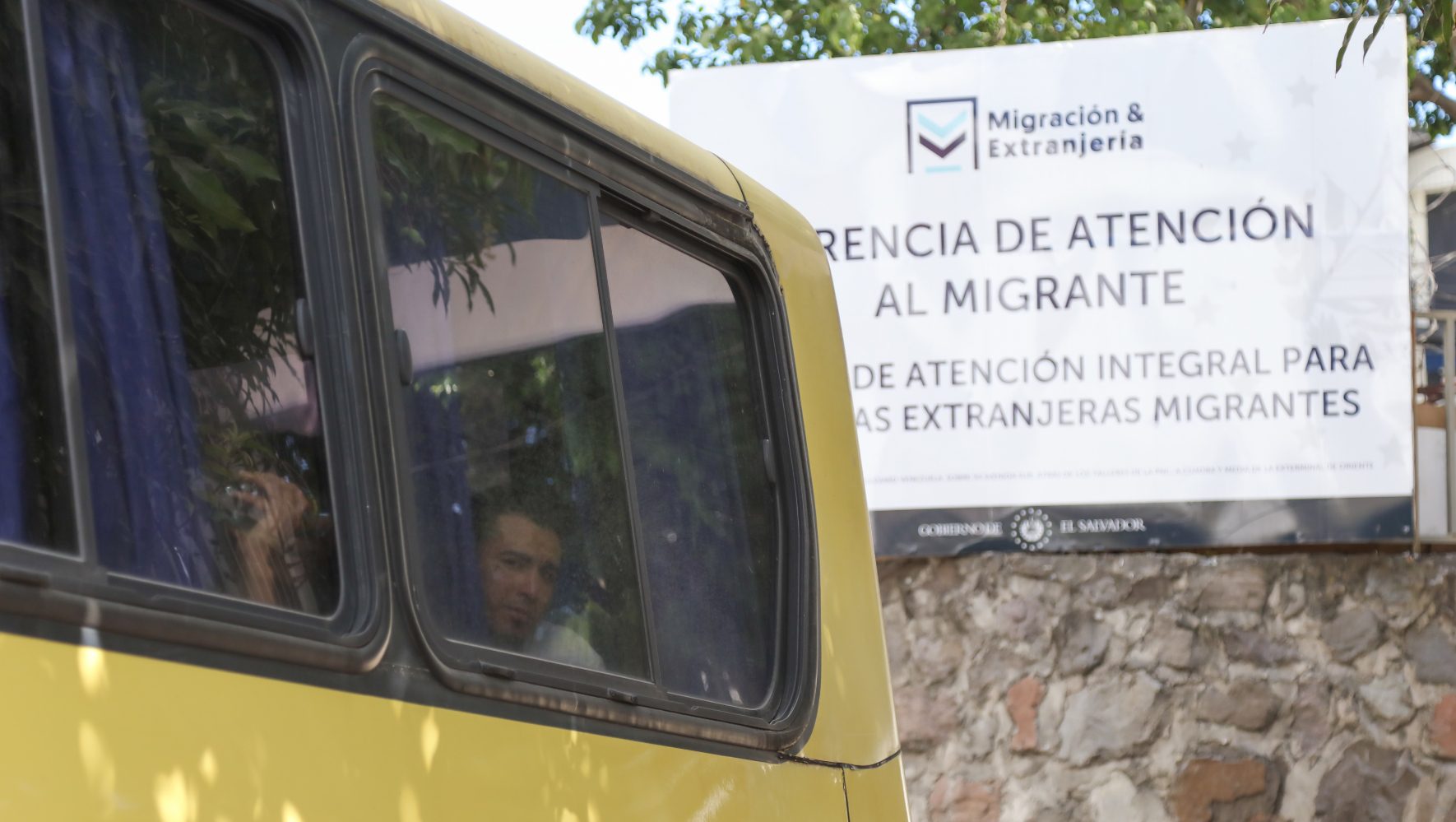On Anniversary of Refugee Convention, HIAS Stands Committed to Welcome
By Joshua Kurtz, Community Organizer, AVODAH Corps Member
Jul 27, 2018

The signing of the 1951 UN Refugee Convention.
(UNHCR)
This Saturday, July 28th, marks the 67th anniversary of the 1951 United Nations Refugee Convention, the central text of international refugee protection and the basis of the UN’s refugee work around the globe.
Today, in the midst of the largest refugee crisis in recorded history, the protections and obligations spelled out in the convention are more crucial than ever.
Ratified in the aftermath of World War II, the convention builds upon the 1948 Universal Declaration of Human Rights, which recognized an individual’s right to seek asylum.
The convention, which was signed by 145 state parties, defines a refugee as anyone who is unable to return to their country due to “a well-founded fear of being persecuted for reasons of race, religion, nationality, membership of a particular social group or political opinion.” The core tenet of the document is the concept of non-refoulement, which dictates that a refugee cannot be returned to a country where they face serious threats to their life or freedom.
The treaty outlines the obligations of states to protect those fleeing violence and persecution. “A refugee has the right to safe asylum,” the United Nations High Commissioner for Refugees (UNHCR) states. “However, international protection comprises more than physical safety.” According to the convention, refugees must also receive rights such as access to medical care, freedom of movement, and the right to work.
“The Refugee Convention embodies the lessons learned during the Second World War, that the world should not confuse people fleeing terror with the terror they were fleeing. Today, those lessons seem to have been forgotten,” said Mark Hetfield, President and CEO of HIAS.
“The duty to welcome refugees is a personal responsibility, a national responsibility and an international responsibility. And if we do not fulfill all three of these, we have not learned anything from history.”
According to a UNHCR report released on World Refugee Day, a total of 68.5 million people were displaced from their homes in 2017, marking the fifth straight year that forced displacement has reached a record high.
Out of that number, 25.4 million are registered refugees, 3.1 million are asylum seekers waiting for their applications to be processed, and 40 million are internally displaced from their own countries. More than half of the world’s refugees are from South Sudan, Afghanistan, and Syria.
Since taking office, the Trump Administration has been implementing policy changes that seek to reduce the United States’ commitment to welcoming those fleeing violence and persecution. In September, the Administration announced a historically low refugee admissions ceiling of 45,000 for this fiscal year. However, according to Refugee Council USA’s most recent refugee report card, the United States is nowhere near reaching the Administration’s ceiling: in the first 9 months of this fiscal year, the country has resettled only 16,230 refugees.
At the same time, the Administration’s policies threaten the nation’s asylum program. In April, the Trump Administration announced a “zero-tolerance” policy on immigration, which called for the prosecution of all individuals apprehended at a non-designated port of entry along the US-Mexico border. The implementation of this policy has resulted in the separation and detention of thousands of families seeking safety in the United States.
At this troubling moment in history, HIAS is working tirelessly to uphold the vision that the 1951 convention put forth — a vision of a world in which refugees, asylum seekers, and immigrants are treated with dignity rather than scorn.
We, along with our partners in the Jewish community and the global community, stand committed to upholding the United State’s legacy of welcome.
To find out how you can take action right now to help asylum seekers, click here. And to learn about other ways you can get involved in HIAS’ work, visit our take action page.


